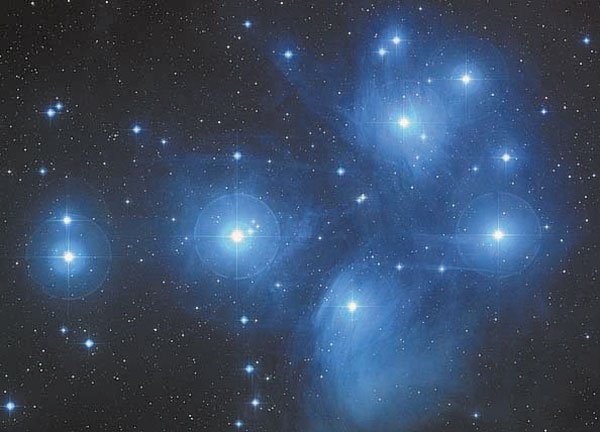April 12 Fading Glory
The glorious stars of winter are dropping from the evening sky
this month. Most prominent among them are the constellations
Taurus, the bull; Orion, the hunter; and Canis Major, the big dog.
They are fairly low in the west and southwest at nightfall.
April 12 Fading Glory
The glorious stars of winter are dropping from the evening sky this month. Most prominent among them are the constellations Taurus, the bull; Orion, the hunter; and Canis Major, the big dog. They are fairly low in the west and southwest at nightfall.
April 13 Bright Stars
Regulus, the brightest star in Leo, the lion, stands high overhead tonight. Spica, in the constellation Virgo, is in the east-southeast. Both stars are blue-white. Well to the right of Spica, look for another bright star, yellow-orange Arcturus.
April 14 Fading Dog Star
Sirius, the “dog star,” is dropping from the evening sky. It is fairly low in the south-southwest at sunset and sets in mid evening. Sirius is the brightest star in the night sky. It looks like a brilliant gem, with a hint of blue mixed with white.
April 15 Corvus
Tiny Corvus, the crow, scoots low across the southern sky on spring evenings. If you have a dark sky, look for the outline of a bird with outstretched wings. Corvus is low in the southeast at nightfall, and stands almost due south around midnight.
April 16 Centaurus
Although Centaurus is a southern constellation, his head and shoulders are visible from much of the United States. They rise by mid evening, and remain in view, low in the south, for a few hours. The centaur’s body and legs are visible only from far-southern latitudes.
April 17 The Centaur
A pair of centaurs – the half-men, half-horses of Greek mythology – grace the night sky. One is Sagittarius, the archer. The other is simply Centaurus, the centaur. It’s visible quite low in the southern evening sky this month.
April 18 Upside-Down Queen
Cassiopeia, the queen, rides her throne across the northwestern sky this evening. At nightfall, she’s in the northwest. Her brightest stars form a bright letter M or W, depending on how you look at it.
– By the University of Texas McDonald Observatory Online














